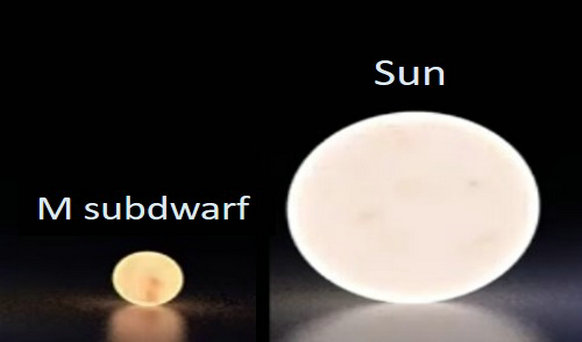
There is a special group of red tiny beasts wandering across the whole Milky Way Galaxy. They are red subdwarf stars who are 'aborigines' of the Milky Way and considered to be born in the Galactic halo and thick disk.
"Learning more about these M subdwarfs can help us know the history of our Galaxy. They are indeed quite rare in the solar neighborhood, but people usually mixed them with some metal-poor disk-born red dwarfs," said Prof. LUO Ali from National Astronomical Observatories of Chinese Academy of Sciences (NAOC). Prof. LUO's team has been making in-depth research on M subdwarfs.
The research team studied the properties of thousands of subdwarfs to understand the intrinsic difference between these scarce M subdwarfs and the normal M dwarfs which are the most numerous stellar members in the Milky Way.
Their study was published in The Astrophysical Journal.
"We have revised the spectroscopic classification system and measured the atmospheric parameters of all the dwarf/subdwarf samples. The results show that the new system behaves better on finding the red tiny beasts, which are the genuine subdwarfs," said ZHANG Shuo, the first author of the study.
The researchers studied the effects of the revision in the classification system that was applied to the spectroscopic subdwarf samples selected from LAMOST and SDSS. They found that the "genuine" subdwarfs identified by luminosity and motion are the ones with the lowest metal abundances, and also have the largest gravities, which was not considered an iconic feature of subdwarf stars.
"For decades, people have collectively referred to the real subdwarfs and a group of metal-poor dwarfs as 'subdwarfs' based on some specific spectral features, but these misclassified stellar objects behave like classical disk dwarfs on all aspects," said ZHANG Shuo. "We found that gravity value is a great criterion to separate them from the genuine subdwarfs."
"The largest sample of M subdwarf stars we built ever had helped us to make this important discovery. More importantly, the kinematic and chemical analysis shows that the sample contains a mix of objects belonging to various stellar populations and having different origins, which deserves further study," said Prof. LUO.

Comparison between an M subdwarf and the Sun. (Image by LAMOST)

86-10-68597521 (day)
86-10-68597289 (night)

52 Sanlihe Rd., Xicheng District,
Beijing, China (100864)

